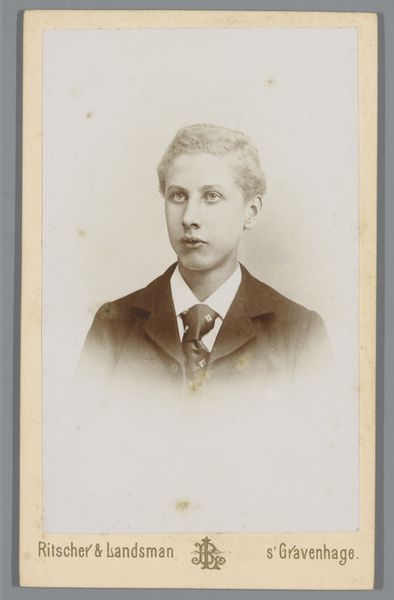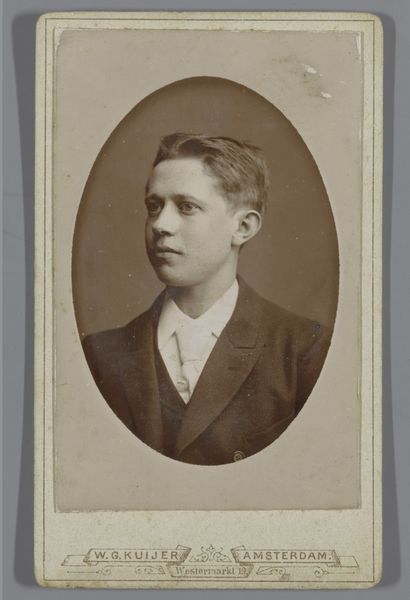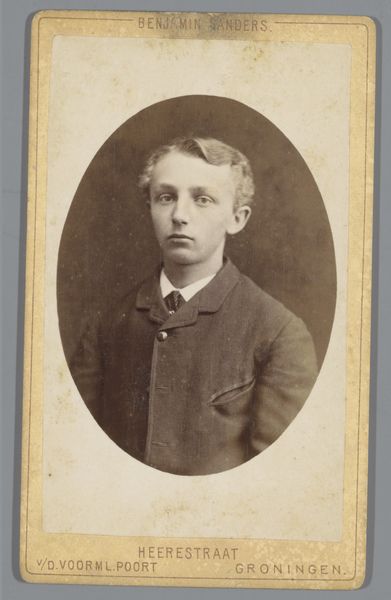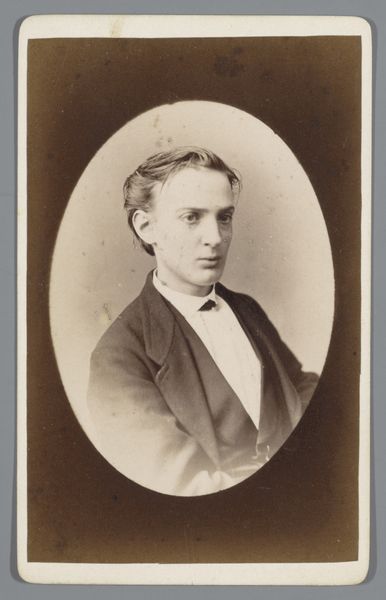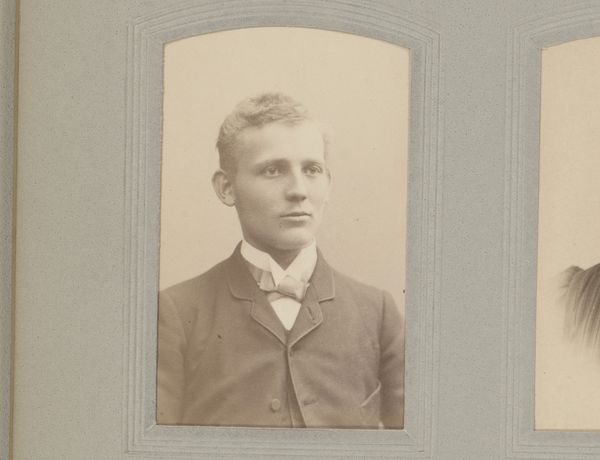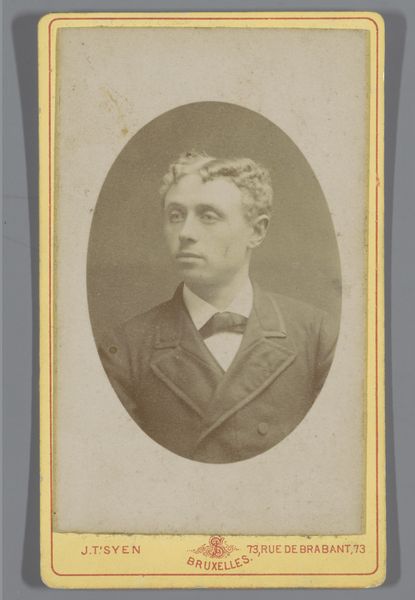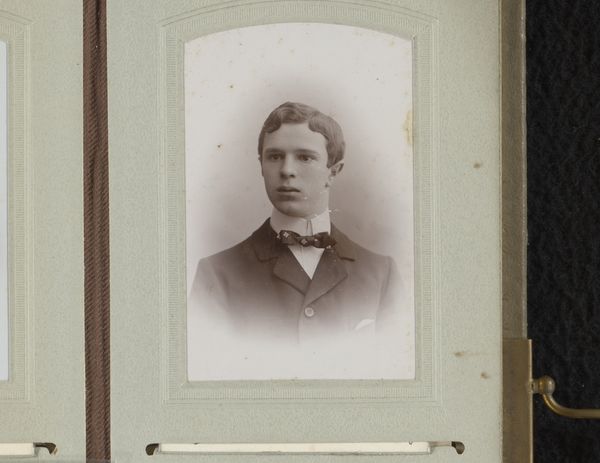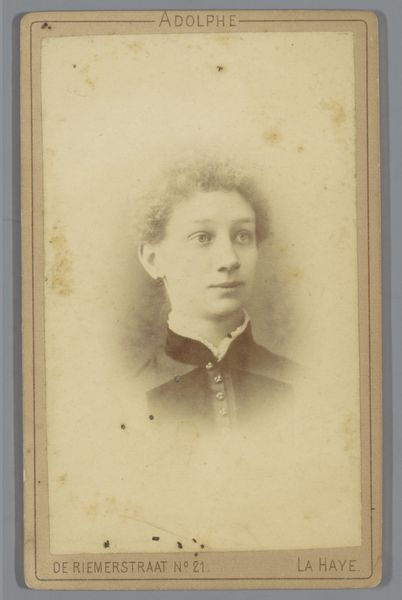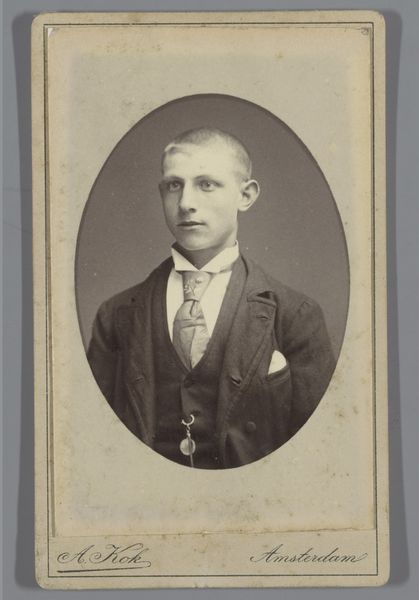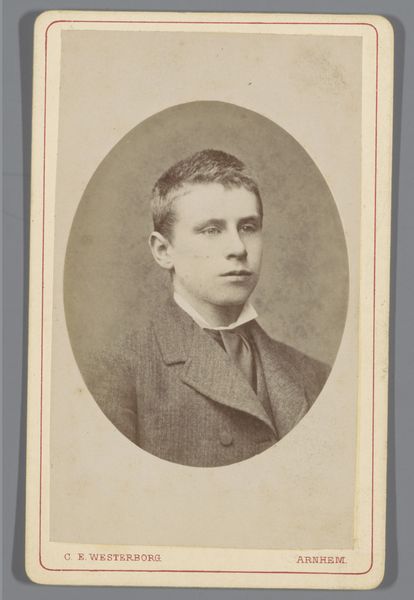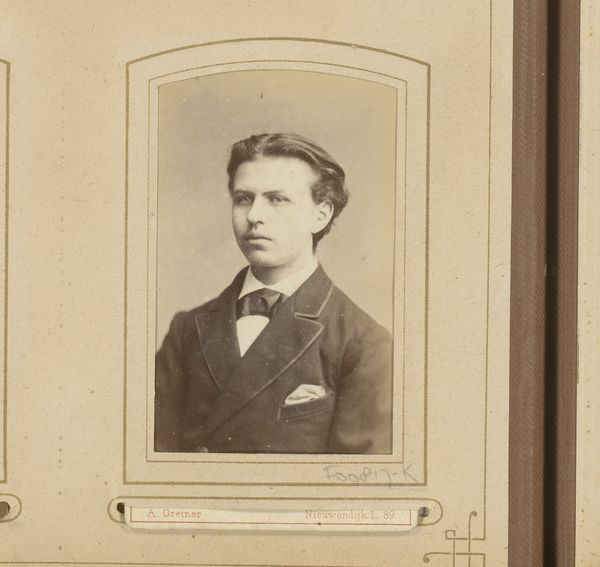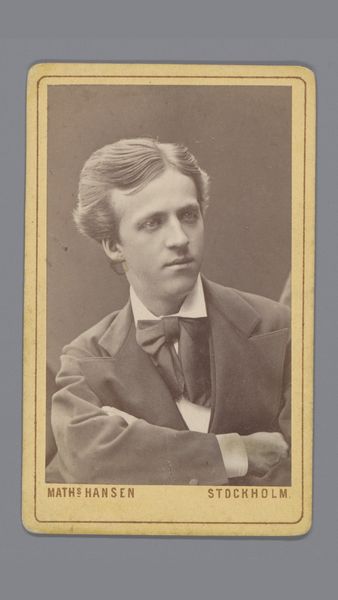
photography
#
portrait
#
photography
#
genre-painting
Dimensions: height 83 mm, width 51 mm
Copyright: Rijks Museum: Open Domain
Curator: Looking at this sepia-toned photograph, titled "Portret van een jongen" - that's "Portrait of a Boy" – estimated from 1860 to 1900, my immediate feeling is one of quiet introspection. Editor: The surface sheen from this kind of albumen print can be remarkably alluring; look how it's captured here, holding so much material nuance despite its small size. Curator: Yes, photography during this period held complex socio-political connotations regarding representation. Think about who was granted the opportunity to be photographed and who was systemically excluded. A young man of likely privilege and, undoubtedly, the politics of class come to mind immediately. Editor: It also makes me wonder about the labor behind its production. We can think about the labor invested in preparing the photographic plates and chemicals used in capturing the image, considering their relative value in this historical moment. Curator: Absolutely. We might ask who gets to construct and own the visual narrative? And, to that end, this specific kind of studio portrait was used, for whom and by whom? Editor: Right, it was largely accessible only to the upper and emerging middle classes. To that point, it shows in his presentation - the cut of his suit, even the styled hair. It seems the sitter would likely consume this in order to signify his status and taste. Curator: It underscores the cultural values assigned to appearance and status, really revealing hierarchies around gender as well. The restrained pose, his serious expression, what story does it intend to convey about masculinity at the time? Editor: Agreed, understanding how photography evolved as both art and a craft is crucial here. How we memorialize ourselves is telling and often serves particular purposes. Curator: Reflecting on this portrait allows us to see how notions of gender, class and social status were embedded within material practices like portraiture. Editor: Yes, the way photography shaped perceptions through its own production gives us much to examine from a material standpoint.
Comments
No comments
Be the first to comment and join the conversation on the ultimate creative platform.
